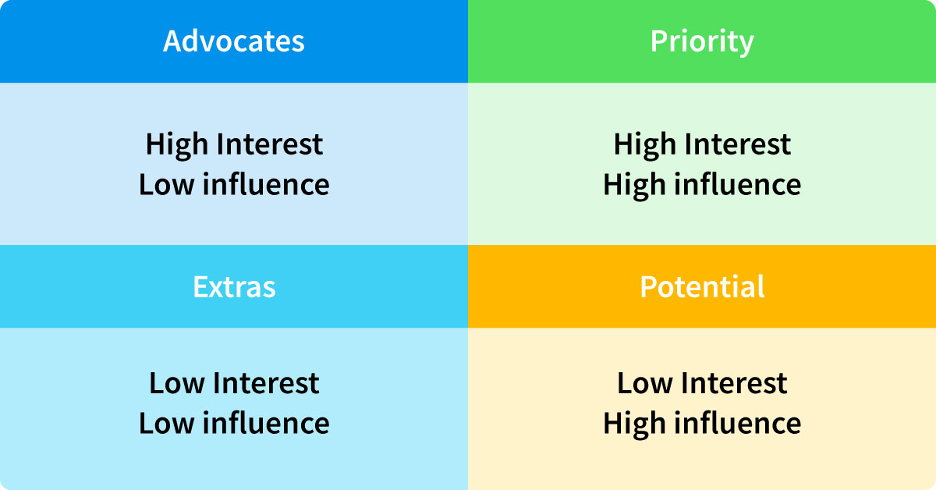Localization managers play a central role in positioning localization as a key business strategy. Here’s how to secure buy-in from all stakeholders.
Just like a machine needs oil to run smoothly, so does each department within a company need processes to function efficiently. Processes keep things ticking along and ensure that products and services meet customer expectations, quality standards, and timeframes. However, when a machine is only one of many moving parts in a complex system, even the best-oiled machine will underperform if left to function in isolation—and localization is no different.
Localization managers have a pivotal role to play not only in ensuring that these processes are running smoothly but also in securing the all-important buy-in from other stakeholders. After all, localization touches on almost every area of the business—without the right level of support, it can be difficult to get the job done properly. In this guide, we’ll explore some proven strategies for winning over the powers that be and getting the green light (and budget) for your localization projects.
Identify key stakeholders
Because each business is different, it’s important to take the time to understand the organization you work for and figure out who the key decision-makers are. These people, or groups, will have a direct impact on your ability to successfully run localization projects, so it’s essential that you map them out and develop a plan for winning them over.
Most stakeholders fall into one of two categories:
Primary stakeholders
These are the people who have the power to green-light projects, sign off on budgets, and give you the resources you need to do your job. They are committed stakeholders—in the sense that they have a vested interest in the success or failure of the localization project. Some examples of primary stakeholders include senior executives and key clients.
Secondary stakeholders
These people don’t have direct decision-making power, but they can influence those who do. They may not be as invested in the outcome of the project, but they need to know what you do and how to do it because their support can still make a big difference. They might be able to provide valuable input or feedback, open doors, or be a champion for your cause. Some examples of secondary stakeholders in localization include the legal, compliance, human resources, and IT departments.
Sort stakeholders by interest and influence
After exhaustively listing out all the stakeholders in your company—from minor players to all-powerful executives and everyone in between—it’s time to start thinking about them in terms of interest and influence.
A prioritization matrix can be a helpful tool for this task, and it could take the form of a simple two-by-two grid with the following criteria:

You should give the most attention to those in the top-right quadrant, who we can call “priority stakeholders.” These are the people who have both the power to make things happen and a vested interest in your success.
Next, you should focus on those in the bottom-right quadrant, the “potential allies.” These are the really influential people who might not have a personal interest in your success but could be persuaded to give their backing if you make a good case. So try to keep them onside, but don’t expend too much energy on them until you’ve won over the priority stakeholders.
After that, you have the “advocates” in the top-left, who have little influence but a strong interest in your success. While it’s tempting to assume that their lack of influence makes them unimportant, don’t dismiss them outright—they could be a valuable source of social proof and support, especially if they’re highly respected within the company.
Finally, there are the “extras” in the bottom-left, who have neither the interest nor the influence to make a difference. You can afford to not have them on board, but devoting a little effort to increasing their interest might pay off down the line if they become advocates or potential allies.
Develop a plan to win them over
Now that you’ve identified and sorted your stakeholders, it’s time to craft a localization business case that will help you get the buy-in you need from each group.
A business case is essentially a document that sets out the reasons for undertaking a particular course of action—in this case, investing in localization. It illustrates why your projects are desirable, viable, achievable, and worthwhile investments.
To build a localization business case, there are three key elements you need to consider.
The strategic context
This section should explain why localization is important as a business strategy. What are the benefits of localization? What are the risks of not localizing? How does localization fit into the broader company strategy?
You might benefit from including third-party data or statistics from industry publications or analysts to back up your claims here. The goal is to demonstrate that localization is a sound investment that will help the company achieve its objectives. Some key stats you can use to make your case include:
- Statista: English may be the most used language on the internet, but China is the country with the highest number of internet users
- Forrester: 64% of consumers value content tailored to their country or geography
- CSA: 72.4% of consumers said they would be more likely to buy a product with information in their own language
The more eye-catching and specific the data, the better. Don’t worry about detailing how you’ll achieve these benefits—that comes later after you’ve secured buy-in from the decision-makers and you move on to devise a localization strategy.
The economic analysis
This section should outline the costs and benefits of localization, both in terms of hard numbers and softer, intangible benefits. Estimate the potential return on investment (ROI) of localization projects, and compare this to the cost of not localizing.
Not all businesses measure the return on localization investment in the same way because the benefits can be difficult to quantify. Moreover, priorities and goals vary from company to company.
Some organizations might focus on the direct financial benefits of localization, such as increased revenue from new markets or higher conversion rates. Others might place more emphasis on the indirect benefits, such as a shorter time to market that can give them a competitive edge, or improved customer satisfaction.
Include as much data as you can to support your claims—anecdotal evidence can be helpful here, but try to back it up with hard numbers where possible. For example, if you’ll be comparing target markets in terms of customer satisfaction or engagement metrics, consider using data from customer surveys or website analytics to make your case. If users in one market are significantly less engaged than those in another, for example, this could be a strong argument for localization.
The impact of experience
There’s an old sales mantra that data tells and story sells. While facts and figures are important, you might be more likely to sway decision-makers with a relatable story or case study.
In this section, share stories about how localization has benefited other companies in your industry. If you can find examples of businesses that have achieved similar goals to the ones your company is pursuing, this will help build a connection between these successes and your own projects.
While focusing on illustrating the positive impact of localization in terms of business outcomes—such as increased revenue or market share—is important, don’t forget the softer benefits as well. For example, if a news outlet has picked up a story about how a certain company’s localization efforts have helped it to build a stronger connection with international customers, this could be valuable social proof.
The goal here is to show that localization can help achieve a wide range of objectives and that other companies in your industry have benefited from making it a part of their strategy.
The way forward
Turning localization into a strategic asset is a journey, not a destination. Even if you’re able to secure buy-in from all the key stakeholders, it’s important to remember that this is just the first step.
Earning a seat at the strategy table is an ongoing process of setting goals, measuring progress, and communicating successes. It’s also about building relationships and adapting your approach as the company grows and changes.
This guide outlined best practices for positioning localization as a key business strategy. To get an insight into how world-class localization teams put them into practice, get The Definitive Localization Manager Playbook by Phrase, one of TextMaster’s technology partners.







